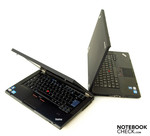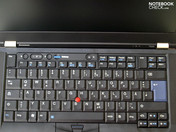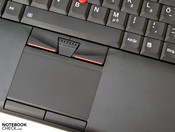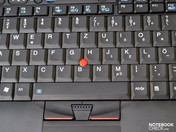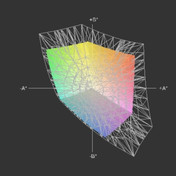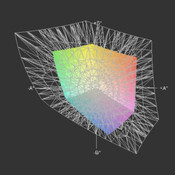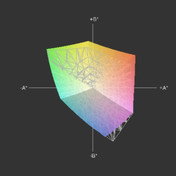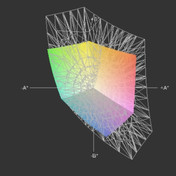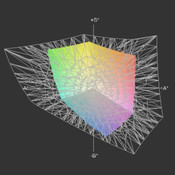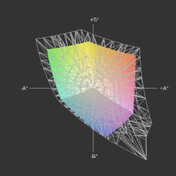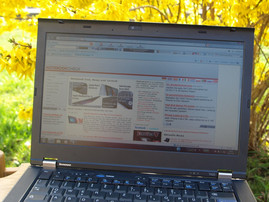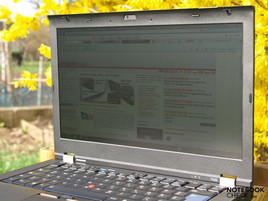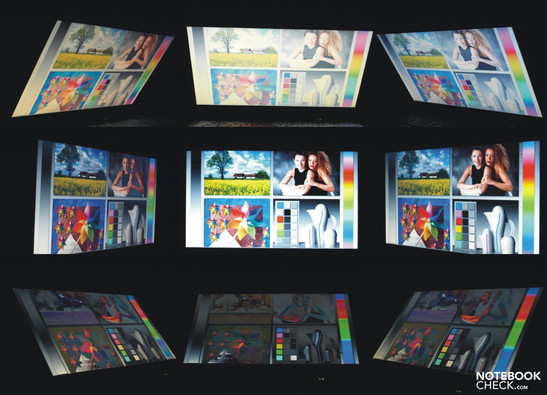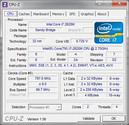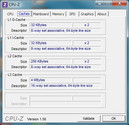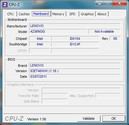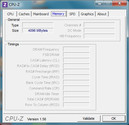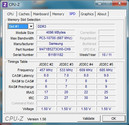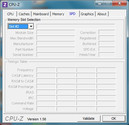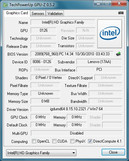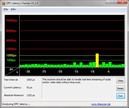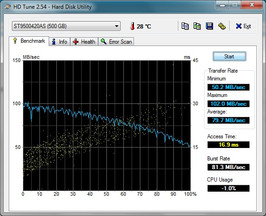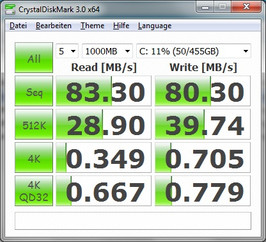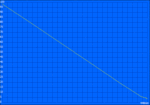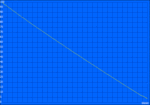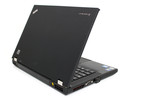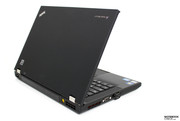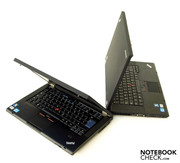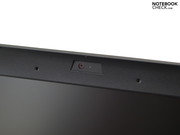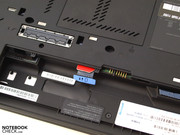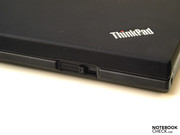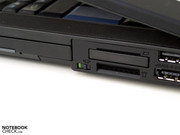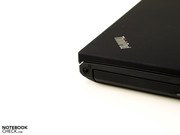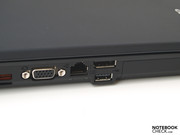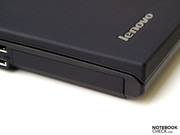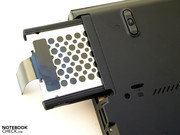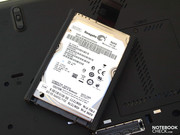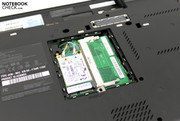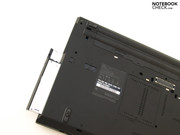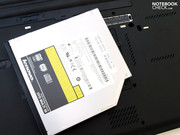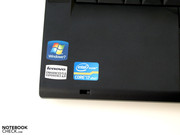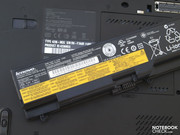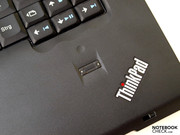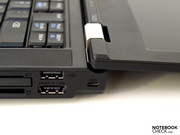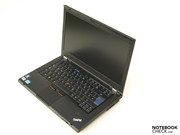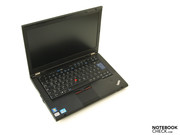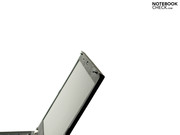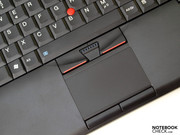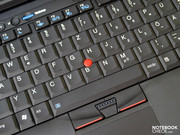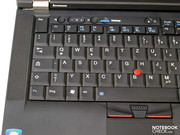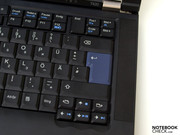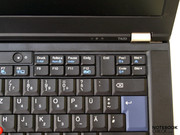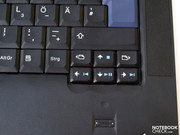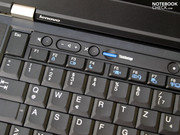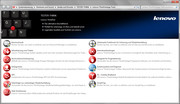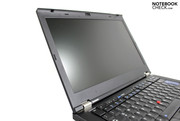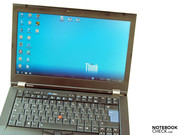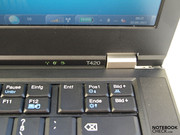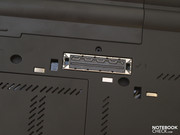Review Lenovo Thinkpad T420 Notebook

Lenovo has doubtlessly made a name for itself in the business field with the Thinkpad notebooks. The T-series wants to "offer the best security, manageability, services and support" according to Lenovo's homepage, and thus sets itself apart from the top of the significantly stronger W-series. In return, the X-series scores with a greater mobility.
Our test device is the 14 incher from the T-series, called T420. Adjacently, the 15 inch model, T520, is also offered and in review at the same time. Essentially, the Tx20 laptops only differ from the previous models, called T410 and T510, by a hardware refresh to the new Sandy Bridge processors.
The test device's full name is T420 4236-NGG. Inside an Intel Core i7 2620M CPU does its job. The incorporated graphics chip, Intel HD Graphics 3000, is exclusively available for video output in our test model. This configuration is supported by a four gigabyte DDR3 main memory and a fast 500 GB hard disk with a revolution speed of 7200 rpm. Aside from various Core i processors, the T420 is also available with a dedicated NVIDIA NVS 4200M graphics card and Optimus technology – at least in the USA. Consequently, the rating of performance contingent parts is dependent on the real configuration and can't necessarily be applied to other models.
The Thinkpad T420 can practically be seen as an immediate opponent of the basically similarly configurable Latitude E6420 from Dell. While Dell has opted for a completely new design, Lenovo contrarily sticks to the tested and tried Thinkpad design for the Thinkpad T420. We will show to what extent both vying notebooks differ in detail.
Case
At first glance, The T420 doesn't seem to differ from the T410 much. But this is deceptive. For one thing, the display's diagonal has slightly shrunk from 14.1 inches to 14 inches. The same applies for the laptop's height and width, whereas the depth has interestingly gained a bit. The measurements for comparison: 30.5x340.5x233mm for the T420 and 32x336x239 for the T410.
Albeit, as we will see in a moment, quite a few changes have been made on connectivity, Lenovo sticks to the proven, light clamshell design. No modifications can be found in color or material choice, either. The almost completely black case has been made from plastic. The haptics correspond to the choice of materials. However, the matt and slightly roughened surfaces don't feel unpleasant.
The case's stability is basically satisfying. But it still shows the same weaknesses known from the T400. So, in the Ultra Bay slot's area and on the plastic cover above the keyboard. The case can yield somewhat and creak under selective pressure.
The display components stand up well to our warp and pressure tests. It hardly bends when the case is lifted up at its edges. The hinges are first give in before image distortions turn up under selective pressure. In return, the display bezel yields evidently when pressure is applied and allows image deviations to become visible.
We like the metallic hinges that hardly teeter after adjusting the opening angle. Surprisingly, they don't cope well in shaky work conditions (train journey). Since they are smooth and the base unit is sufficiently heavy, both single-handed opening and closing are possible. The maximum opening angle of even a bit more than 100 degrees doesn't cause any restrictions in any case.
In addition to the clamshell design, the ramshorn hook contributes to safety during transportation. It keeps the device securely closed and can be opened easily with the slider on the front edge.
Connectivity
Let's start with a tour around the device itself. We notice that the positioning favors right handed users a bit. Depending on the utilization of single ports, a few cables can gather on the left, which may considerably obstruct the work area on the laptop's left. Two of the five USB 2.0 ports, the display port, the VGA and the RJ45 are found on the left's center edge.
In opposition, Lenovo has taken care to place potentially permanently occupied ports, such as the other two USB 2.0 ports and the eSATA/USB combo port, in the right's rear area in the interface arrangement. In addition, the right accommodates, from front to back, a 3.5mm combo audio socket, the optical drive in an Ultra Bay slot, a 4in1 cardreader that supports SD, MM, SDHC, SDXC, and an ExpressCard34 port.
The rear is completed by a powered USB 2.0 port and a RJ11 modem socket. The power adapter is also connected on the case's rear.
To our regret, Lenovo forgets, like Dell in its E6420, to install a USB 3.0 port in the course of the refresh. Although the eSATA interface also bids a higher data transfer rate than USB 2.0, increasingly more external mass memories are being offered with USB 3.0 ports and eSATA is disappearing little by little from the market. In comparison to the competition, we also notice that Dell relies on the utilization of a HDMI port in the E6420 and thus accepts the according restrictions. In opposition, Lenovo remains resolute in installing a display port directly on the device.
Compared with its predecessor, the T410, hardly anything of significance has been changed. Merely a powered USB interface has been added. Moreover, the interface layout has been revised, but not really improved. So, if you find cables in the work area beside the laptop disturbing, or if you don't want to re-connect all the cables after mobile use, you can make use of a docking solution. The correlating docking port is, as usual, on the notebook's bottom.
Talking about docking stations – it remains interesting to see which docking solutions will find their way to Europe. Currently, two models are available for the T420 in the USA: The ThinkPad Mini Dock Plus Series 3 (US/Canada/LA) (-> manufacturer's information) for about 250 US dollars. It allows connecting three additional external monitors in addition to the installed display. Secondly, the ThinkPad Port Replicator Series 3 (-> manufacturer's information) for about 280 dollars.
Communication
Alike the T410, our T420 test sample scores with an extensive communication configuration. Everything that is useful and available is installed. A Bluetooth module version 3.0 is optional, and installed in our test device. It allows data exchange with small, portable devices, such as PDA or mobile phones. Just as optional is a mobile broadband module (F5521gw Mobile Broadband) also installed in our Thinkpad. The correlating SIM slot is located in the battery compartment. The matching antenna cables are present so that a UMTS/HSPA module can be retrofitted later. In regards to WLAN, various options are given. An Intel Centrino Ultimate-N 6300 AGN (agn) module is in the test device. The laptop can be linked to Ethernet networks via the Intel 82579 LM Gigabyte Network Connection. Video conferences aren't a problem anywhere with the (optional) 720p HD camera and this configuration.
Security
In addition to the obligatory Kensington Lock, the T420 also has a fingerprint reader, among other things. A splash waterproof keyboard saves data from loss in case of mishaps with liquids.
Supplies
Besides the necessary paraphernalia, such as power adapter and battery, only a bit of printed information is included in the scope of delivery. The user should create recovery DVDs for the pre-installed Windows Professional 64bit immediately after purchase. This isn't a problem with the convenient ThinkVantage tool, though.
Warranty
The standard warranty for the T-range is three years in Europe. The basic warranty only includes a one year bring-in service in the USA. Various warranty extensions can be purchased optionally.
Input Devices
Keyboard
Neither design nor layout has been modified in comparison to the T410. Apart from the exchanged STRG and FN keys, we are dealing with a standard layout with clearly arranged key grouping. The blue ThinkVantage key is again the most striking additional key. It opens the well arranged ThinkVantage tools, respectively a recovery process can be started while booting. Just left of it are a mute button for the speakers and microphone and a rocker for volume control. The keyboard's illumination is integrated in the upper display bezel, as it was in the T410. It can be turned on/off with the FN+PGUP keys. The light can help you find your way around the input devices in complete darkness, but it can't hold a candle to backlit keyboards in our opinion.
Prolific typists will find the Thinkpad keyboard very pleasing due to its mechanical qualities, well dosed key drop and clear pressure point. Additionally, concave keys add to typing comfort. Unfortunately, the keyboard gets quite loud especially during energetic typing. Nevertheless, touch-typing isn't a problem right from the start.
Touchpad and Trackpoint
The similarities to the T410 are just as striking here. The touchpad and trackpoint can be independently disabled and enabled via F8+FN. The touchpad proves to have a pleasantly roughened surface with good gliding traits. The mouse cursor control is, again, accurately possible without problems and the multi-touch features respond as expected. Moreover, scrolling via scroll fields at the touchpad edge is also possible. The touchpad's borders can hardly be distinguished from the surrounding case due to a simple component joint.
The correlating buttons need a bit of getting used to since they are on the beveled edge. They are smooth, respond well over their entire breadth and don't click too loud, either.
Alternately, there is also a red trackpoint. It allows just as precise navigating of the mouse cursor. The correlating buttons are fairly quiet. There are no complaints in regards to functionality, either.
Display
Instead of the 16:10 format as in the T410, a 16:9 aspect ratio is now used. The display diagonal has been marginally reduced from 14.1 inches to 14 inches. In return, the resolution has been increased from 1440x900 pixels to 1600x900 pixels. Thus, there are now so many pixels in the total height as in the previous model. However, the test device has gained a bit of width.
As it isn't expected differently from a business device, the display surface has been AR coated. The device thus not only meets the requirements on display workstations, but also is more suitable for outdoor work.
The T420 has generally improved in comparison to the T410 in terms of assessments. It is brighter and illuminated more evenly. Merely the black value is slightly lower than in the prior model. Nevertheless, the better brightness results in a somewhat higher contrast.
In contrast, the E6420 scores with a significantly higher maximum brightness of 320 cd/m2 and still 277.7 cd/m2 on average. In return, Dell's laptop has to admit clear defeat in the field of black value and contrast.
| |||||||||||||||||||||||||
Brightness Distribution: 85 %
Contrast: 162:1 (Black: 1.38 cd/m²)
42.11% AdobeRGB 1998 (Argyll 3D)
61% sRGB (Argyll 3D)
40.75% Display P3 (Argyll 3D)
As you can see in the comparison pictures, which have been made with various ICC color profiles, The T420 hasn't been designed for professional image editing. AdobeRGB and sRGB aren't covered. Thus, it is in the same league as Dell's E6420 with the same display size and resolution. Differences in view of color reproduction become visible in comparison with especially high quality screens. They can be found, for example, in Apple's MacBook Pro 13 or in Dell's XPS 15. Even the T420's bigger brother, the T520, scores better here.
The last point we look at for rating a screen is its viewing angle stability. It turns out to our satisfaction horizontally and the image can be recognized even in very narrow angles without ado. As usual in the majority of laptops, the viewing angles along the vertical plane are considerably lower in the T420. Consequently, you can take it for granted that frequent viewing angle adjusting will be necessary to ensure a well legible image, especially during outdoor use. When several people are looking at the screen at the same time, their eyes should be at about the same height.
Performance
Currently, various models with Core i5 or i7 of the second generation are being offered. To be exact, our test model was equipped with an Intel Core i7 2620M Sandy Bridge CPU. It is presently the fastest dual core processor from the Sandy Bridge family that was introduced at the beginning of 2011. It can process up to four threads at the same time thanks to Hyper Threading. The Turbo Boost technology allows single cores to overclock dynamically from 2.7 GHz up to 3.4 GHz, depending on load and cooling capacity. In comparison to the Arrandale processors, the turbo function has been improved among other things.
The DirectX 10 capable Intel HD Graphics 3000 chip incorporated directly in the processor is available for the video output in our test device. Thus, the graphics performance is about on par with an Nvidia Geforce 310M entry level card. Alike the Latitude E6420, models with an NVIDIA NVS 4200M and Optimus technology are listed in the USA.
Our T420 has a four gigabyte DDR3 RAM available for the main memory. They are located on one single, inaccessible for the user, chip. Only a second, still unoccupied bank is accessible via the maintenance cover. An intended upgrade can easily be accomplished by the customer. Due to the 64bit Windows 7 Professional operating system, the four gigabyte of main memory can be exploited efficiently, in contrast to a 32 bit version, and there's nothing standing in the way of a RAM upgrade. The processor's memory controller can address a maximum of up to eight gigabyte of DDR3-1066/1333 RAM.
| PCMark Vantage Result | 7845 points | |
Help | ||
Both the processor as well as the application performance is unsurprisingly a bit higher than the E6420 equipped with a Core i3-2310M. The performance rates are according to the expectations on this hardware configuration. Our test candidate achieved a total score of 7845 points, which is especially due to its high communication sub score, in the PCMark Vantage test for rating the overall performance. Thus, it's even on par with stronger gaming machines, like the Asus G73SW (GeForce GTX 460M, Intel Core i7 2630QM), in terms of application performance.
Graphic Performance Verdict
The test device still can keep up with gaming machines like the Asus G73SW in regards to application performance. However, in view of the graphics hardware, it doesn't stand a chance in 3D performance as we expected right from the start. That is confirmed by the results in the Cinebench Shading Test and the various 3DMark benchmarks.
Unfortunately, the test results are beneath those that would be expected for a HD Graphics 3000. However, since the power measurements always remain under par, we have to reckon with a defective device. Another indication for this is that the device detection of the ThinkVantage Tools fails regularly. In order to exclude a problem in the settings we checked the BIOS and the energy settings in Windows 7. We will attempt to attain a replacement device for an update review. We would refer to our detailed test of the Intel HD Graphics 3000 chip and to the HD Graphics 3000's spec sheet for more information.
| 3DMark 05 Standard | 6131 points | |
| 3DMark 06 Standard Score | 3381 points | |
| 3DMark Vantage P Result | 1696 points | |
Help | ||
Our test device's hard disk is a ST9500420AS from Seagate. It has a gross capacity of 500 GBs, whereas a part is used as a hidden recovery partition. It achieves according results in HDTune and in CrystalDiskMark tests with a revolution speed of 7200 rpm.
A DVD burner is also available as another mass storage device. To be precise, it is an Optiarc DVD RW AD-7710H.
Emissions
System Noise
The T420 always remains fairly quiet regardless of the load. The system noise is a constant 32.2 dB(A) in low load. The hard disk is slightly louder with 32.5 dB(A) during access.
The test laptop just only reaches a maximum noise level of 35.2 dB(A) during our stress test (GPU and CPU in full load). The operating noise thus always stays at an acceptable level. The power consumption assessments (28W max) however indicate that the processor doesn't exploit its maximum possible capacity even during the stress test. Monitoring the processor clock rate with the CPUZ tool recorded the default clock rate of 2.7 GHz for the CPU in the stress test. This means, no overclocking of all four cores and the installed GPU during load. The CPU clocks with 3.19 GHz when only Prime95 is activated. When Furmark is added, the system throttles down to 2.7 GHz.
We can also only record a maximum of 3.19 GHz in Cinebench R10 Single Core rendering. The clock rate meter stays at the same level in multi core rendering. The i7-2620M's maximum possible clock rate of 3.4 GHz is consequently not exploited in any tested state. Nevertheless, the benchmark results that are determined in Cinebench R10 stay within the i7-2620M CPU's expected range and don't show any irregularities in regards to a possible throttling.
Noise level
| Idle |
| 32.3 / 32.3 / 32.3 dB(A) |
| HDD |
| 32.5 dB(A) |
| DVD |
| 36.4 / dB(A) |
| Load |
| 33.5 / 35.2 dB(A) |
 | ||
30 dB silent 40 dB(A) audible 50 dB(A) loud |
||
min: | ||
Temperature
The tested T420 stays pleasantly cool everywhere in low load. This still applies for the entire upper surface even during higher load, for example two hours in the stress test. Merely temperatures above body temperature are measured in some places on the bottom, and a maximum of 39.7 degrees Celsius in the vents' areas.
The Core i7 2620M dual core processors' core temperatures inside climb to a maximum of 85 degrees Celsius inside. We must point out that the T420 in the configuration at hand hasn't been conceived for graphic-heavy applications, but for office and internet anyway.
(+) The maximum temperature on the upper side is 35.6 °C / 96 F, compared to the average of 34.3 °C / 94 F, ranging from 21.2 to 62.5 °C for the class Office.
(+) The bottom heats up to a maximum of 39.7 °C / 103 F, compared to the average of 36.8 °C / 98 F
(+) In idle usage, the average temperature for the upper side is 26.7 °C / 80 F, compared to the device average of 29.5 °C / 85 F.
(+) The palmrests and touchpad are cooler than skin temperature with a maximum of 31.7 °C / 89.1 F and are therefore cool to the touch.
(-) The average temperature of the palmrest area of similar devices was 27.6 °C / 81.7 F (-4.1 °C / -7.4 F).
Speakers
The speakers' quality isn't to be rated as high in an office laptop for professional use as in, for example, a multimedia notebook. In fact both stereo loudspeakers, on the keyboard's left and right, are basically suitable for voice. Music enjoyment doesn't turn up due to the tinny, bass-poor and treble-heavy sound. High quality headphones, connected to the 3.5 mm audio combo socket, can remedy this. The signal is transmitted clearly, undistorted and static-free in the test (audio test only, no measurement).
Battery Life
Our test model is at the start with a 57 Wh, 6 cell lithium ion battery in this test. One possibility of extending the battery life is ordering the 9 cell battery. Another is the docking of a 9 cell battery. According to the manufacturer's specs, a total maximum battery life of up to 30 hours is possible.
In any case, a maximum battery life short of "only" seven and a half hours is possible with the battery at hand. BatteryEater's Reader's Test determined this runtime in minimum brightness, with disabled wireless module and in energy saving mode. This rate is unrealistic for practical use due to the low and unusable minimum brightness.
We execute the WLAN test in a useable brightness, so from level 12 to 15. We can do research on the internet for up to six hours, also in energy saving profiles, in this low load scenario (no flash videos).
Movie enjoyment ended after a bit less than three hours in the DVD test. It is executed in maximum brightness and disabled wireless modules, as well as in "Video" mode.
The battery life nosedives in 3D intensive applications, maximum brightness, enabled wireless modules and maximum performance mode. The BatteryEater Classic test simulates an OpenGL calculation for us and records a minimum battery life of only about an hour.
The Latitude E6420 clearly has the lead in the battery tests due to its larger 9 cell battery. Our test laptop's runtimes are nevertheless remarkable in relation to the battery's capacity. That is especially due to the fairly low power consumption. It is a bit lower than that of the E6420 with 6.8 to 11.5 watts in idle mode.
Surprisingly, the maximum power consumption wasn't as high as expected in the stress test (100% CPU and GPU load). Solely the CPU proves to have a maximum power loss of 35 watts. However, our meters only recorded 28.6 watts for the entire system. Thus, we checked the setting in Lenovo's PowerManagement in Windows 7 and the BIOS settings. But we didn't find anything in neither place. The settings for mains operation are clearly set to "Maximum Performance" in the BIOS.
At any rate, the T420 is also available with a dedicated NVIDIA NVS 4200M graphics card in the USA. The Optimus technology is thus used to keep the power consumption low during low load. Since our E6420 test device is equipped with the NVIDIA NVS 4200M graphics card and Optimus option, our T420 has a clear advantage in power consumption during load scenarios.
| Off / Standby | |
| Idle | |
| Load |
|
Key:
min: | |
Verdict
Apart from the expected performance increase due to the new processor generation, many things tried and tested things have been maintained. This is just as true for the case as for the pre-installed, convenient ThinkVantage tools. Slight modifications and upgrades can be found in the connectivity. Nevertheless, the user still has to live without USB 3.0. In return, an eSATA/USB port has been installed.
The test laptop's communication configuration is comprehensive. All available options are exploited: broadband module, Bluetooth version 3.0, WLAN with standard n support and gigabit Ethernet.
We like the 14 inch screen that is marginally smaller than the T410's (display diagonal). The desktop's layout has been maintained, respectively even slightly improved in width due to a resolution of 1600x900. There's nothing standing in the way of mobile use with the matt display surface and good brightness. However, the T420 only bids standard fare in terms of color reproduction.
According to the manufacturer, a battery life of up to 30 hours are supposed to be possible with the 9 cell system battery and additionally docked 9 cell battery slice. We achieved a plausible battery life of up to 6 hours with our 6 cell battery with a capacity of 57 Wh (WLAN test).
The T420 has basically been designed for business customers who are looking for a solid office laptop with a good application performance and nevertheless good mobile qualities. A slight performance increase in 3D applications can be expected in the configurations with a dedicated Nvidia NVS 4200M graphics card, which also supports DirectX 11, listed in the USA. However, our test laptop won't mutate to a stronger graphics workstation even with this graphics solution.




